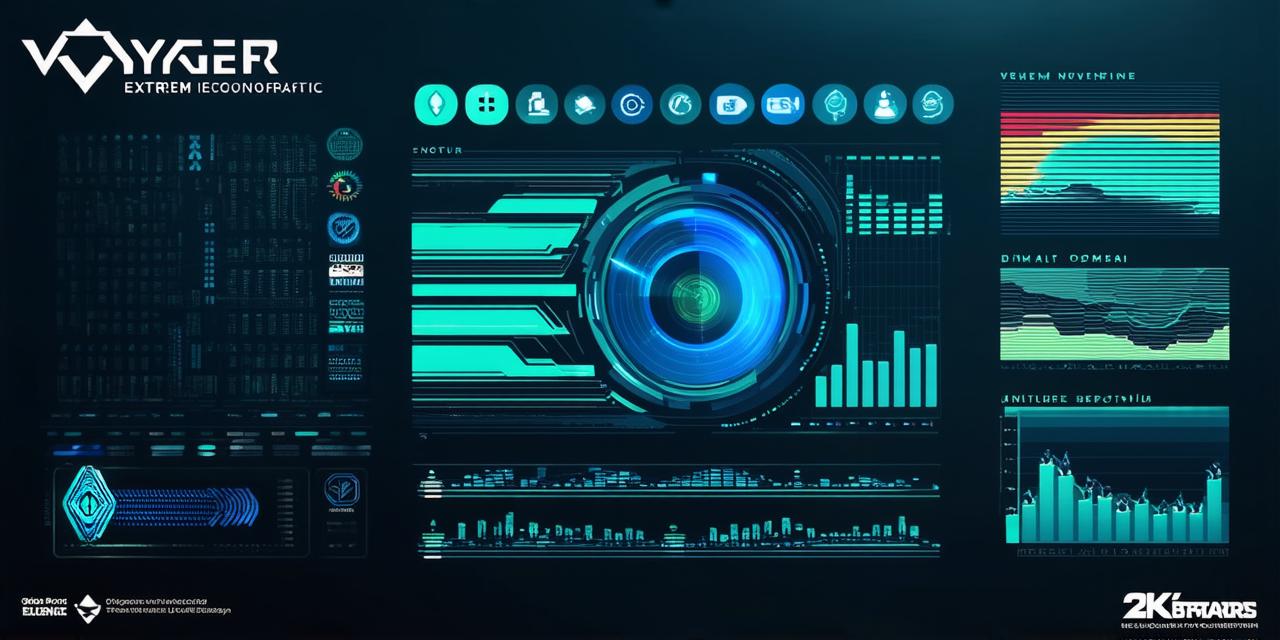If you’re a blockchain developer looking to learn more about what blockchain technology Voyager uses, then this article is the perfect place to start. In this comprehensive guide, we will explore the various blockchain platforms and protocols that Voyager has adopted, as well as their benefits and drawbacks.
Voyager’s Blockchain Adoption: An Overview
Before diving into the specific blockchain technologies that Voyager uses, it’s important to understand why they have chosen to adopt these platforms. Firstly, blockchain technology has the potential to revolutionize many industries, including finance, supply chain management, and healthcare. The decentralized and secure nature of blockchain makes it an attractive option for businesses looking to improve efficiency, reduce costs, and increase transparency.
Secondly, Voyager recognizes that not all blockchain technologies are created equal. Each platform has its own unique features and capabilities, which make them better suited to specific use cases. By adopting a range of blockchain technologies, Voyager can leverage the strengths of each platform to create a robust and scalable infrastructure.
1. Ethereum
Ethereum is one of the most well-known blockchain platforms, with a market capitalization of over $400 billion. It was created in 2015 by Vitalik Buterin and is designed to support decentralized applications (dApps) built on top of the platform.
Ethereum uses a Proof of Work (PoW) consensus mechanism, which requires miners to solve complex mathematical problems to validate transactions and create new blocks. This process consumes a significant amount of energy and has been criticized for its environmental impact. However, Ethereum is constantly evolving, with plans to transition to a Proof of Stake (PoS) consensus mechanism in the near future.
Voyager uses Ethereum for several purposes, including storing and managing customer funds, as well as hosting dApps built on top of the platform. One example of a dApp that Voyager hosts is the Voyager DAO, which allows users to participate in decision-making processes related to the platform’s development and operations.
2. Polkadot
Polkadot is another popular blockchain platform with a market capitalization of over $10 billion. It was created by Gavin Wood, the co-founder of Ethereum, and is designed to support interoperability between different blockchain networks.
Polkadot uses a unique consensus mechanism called the Parachain Protocol, which allows for the creation of independent blockchains that can interact with each other in a secure and scalable way. This makes it easy for dApps built on Polkadot to communicate with other platforms and take advantage of their features.
Voyager uses Polkadot to host several dApps, including the Voyager Lending Protocol (VLP) and the DeFi-compliant Stablecoin Platform (DSP). These dApps allow users to lend and borrow cryptocurrencies, as well as access a range of decentralized finance (DeFi) tools and services.
3. Cosmos
Cosmos is a blockchain network that was created by the Interledger Protocol Foundation in 2018. It’s designed to facilitate interoperability between different blockchain networks, making it easy for dApps built on one platform to communicate with those built on another.
Cosmos uses a Proof of Stake (PoS) consensus mechanism, which is more energy-efficient than the PoW mechanism used by Ethereum. Cosmos also allows for the creation of independent blockchains called zones, each with their own governance and decision-making processes.
Voyager uses Cosmos to host several dApps, including the Voyager DeFi Protocol (VDP) and the Voyager Stablecoin Platform (VSP). These dApps allow users to access a range of DeFi tools and services, as well as participate in decision-making processes related to the platform’s development and operations.
Case Studies and Personal Experiences
Now that we have an understanding of the blockchain platforms and protocols that Voyager uses let’s take a look at some real-life examples of how they are being used by the company.
One example of Voyager using Ethereum is their partnership with Chainlink, which provides data feeds to smart contracts built on the Ethereum platform. This allows Voyager to access real-time market data and create more sophisticated trading strategies.
Another example of Voyager using Polkadot is their partnership with Chainlink, which also provides data feeds to smart contracts built on the Polkadot platform. This allows Voyager to access real-time market data from multiple sources and create even more sophisticated trading strategies.

Finally, an example of Voyager using Cosmos is their partnership with the Interledger Protocol, which provides a secure and scalable way for different blockchain networks to communicate with each other. This allows Voyager to access a wider range of DeFi tools and services and create more complex trading strategies.
Conclusion
In conclusion, Voyager is using a range of blockchain platforms and protocols to create a robust and scalable infrastructure that supports decentralized applications (dApps) and other use cases. By adopting different technologies, Voyager can leverage their strengths and create a more efficient, secure, and transparent system.
FAQs
Here are some frequently asked questions about blockchain technology:
Q: What is blockchain technology?
A: Blockchain technology is a decentralized and secure way of storing data and conducting transactions. It uses a distributed ledger to record and verify all transactions, making it nearly impossible to alter or manipulate the data.
Q: What are dApps?
A: Decentralized applications (dApps) are applications that run on a blockchain platform and are powered by smart contracts. They are decentralized, meaning they don’t rely on any central authority to function, and can be accessed by anyone with an internet connection.
Q: What is Ethereum?
A: Ethereum is a popular blockchain platform that was created in 2015 by Vitalik Buterin. It’s designed to support decentralized applications (dApps) built on top of the platform, and uses a Proof of Work (PoW) consensus mechanism.
